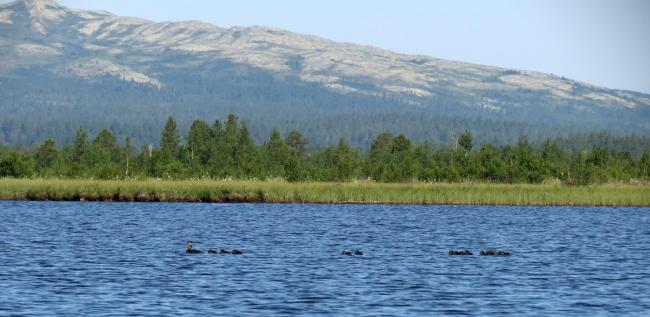Tufsingdeltaet
Tufsingdeltaet
- Country:
- Norway
- Site number:
- 1199
- Area:
- 895.0 ha
- Designation date:
- 06-08-2002
- Coordinates:
- 62°11'38"N 11°49'14"E
Carousel
CarouselMaterials presented on this website, particularly maps and territorial information, are as-is and as-available based on available data and do not imply the expression of any opinion whatsoever on the part of the Secretariat of the Ramsar Convention concerning the legal status of any country, territory, city or area, or of its authorities, or concerning the delimitation of its frontiers or boundaries.
The Site includes the delta of the River Tufsinga where it meets Lake Femund, and a section of the Lake. The landscape is in a state of slow continuous change as the river erodes, transports and deposits sediments to create a number of small islands covered with mires, willow scrubs, and belts of sedge. The formation of mires into the lake through the overgrowing of ponds is considered to be remarkable. Land areas along the slow flowing river are dominated by large, dry and open mires with several dystrophic pools and ponds. The aquatic vegetation is relatively rich and the river banks are surrounded by dense birch woodland. Despite the Site’s high altitude and latitude, a total of 49 different wetland bird species have been recorded. They notably include breeding ducks, waders and gulls, as well as other bird groups such as divers, swans, geese and grebes, most of which are stopping over. The river delta is important area for the globally vulnerable Baltic whitefish (Coregonus lavaretus). Human uses include sport fishing, berry-picking, hunting and canoeing, but human impacts are very limited. The Site is valuable for its roles in flood reduction, sediment trapping and nutrient fixing.
- Nature Reserve - Tufsingdeltaet
- NO1199RIS_2305_en.pdf
- NO1199RISformer2003.pdf
- NO1199RISformer_171027.pdf
- NO1199RISformer_220720_1804_en.pdf
- NO1199map.pdf






